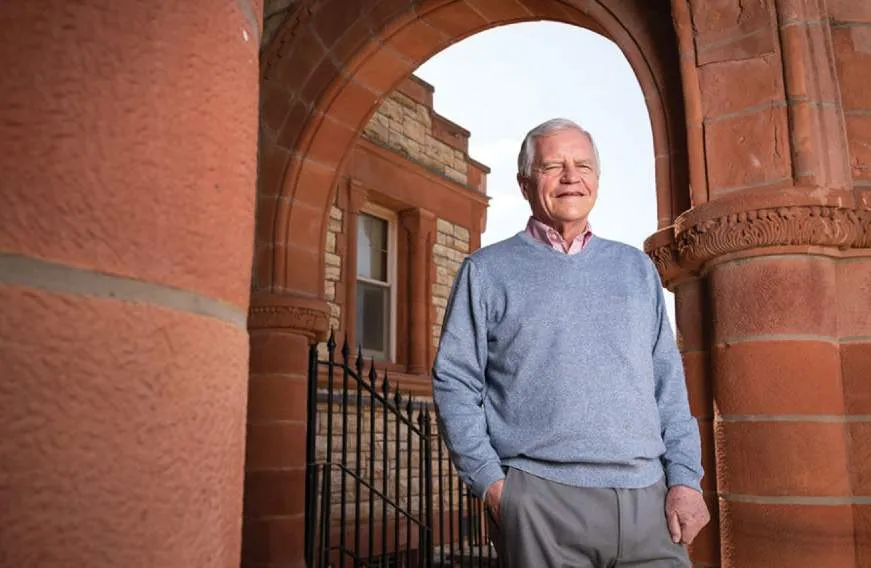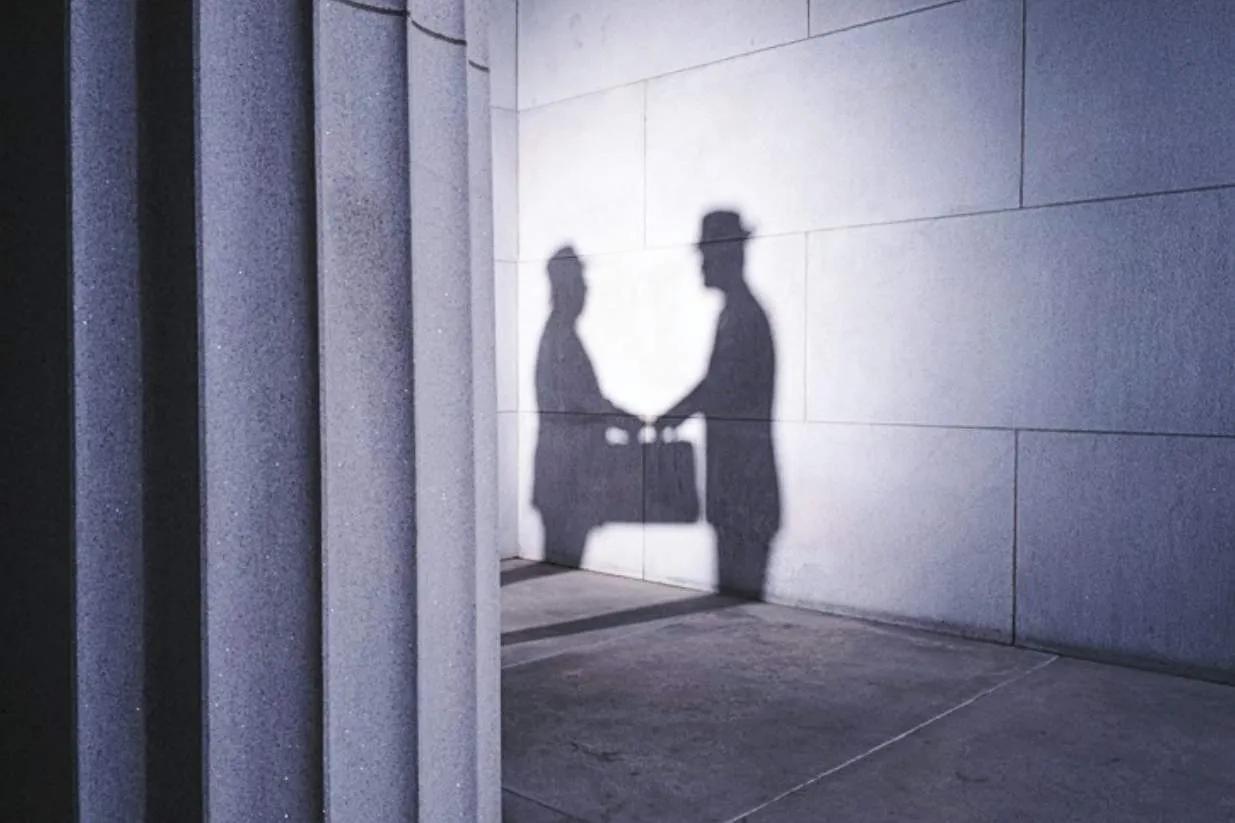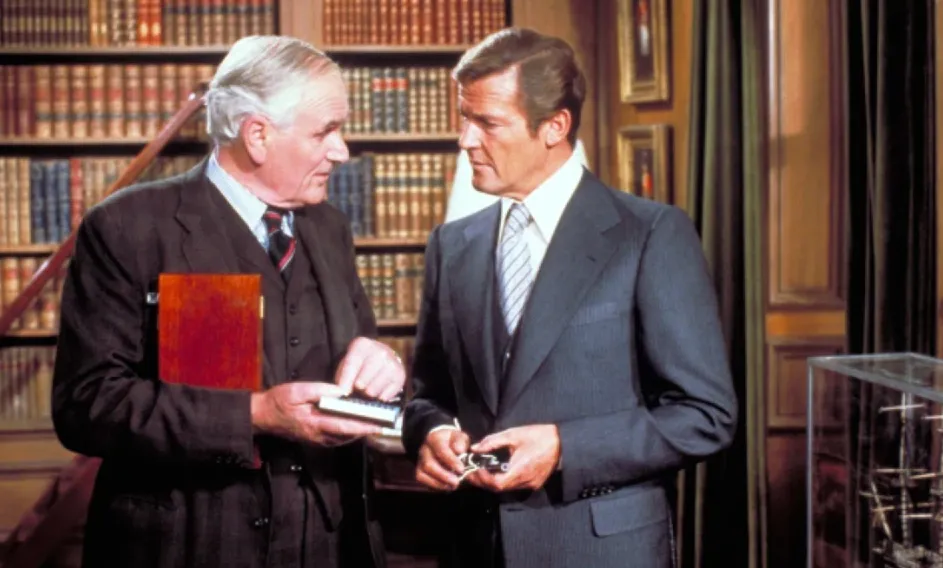The Reluctant Q: A CIA Spy’s Life In the IT Fast Lane
When Robert Wallace’s boss pushed him to apply for the Office of Technical Service (OTS), the CIA officer shrugged.
Bob was a field operative, an analog guy in a digital world. “He may as well have suggested that I apply for Nasa’s astronaut program,” Wallace recalled in Spycraft: The Secret History of the CIA's Spytechs.
Like it or not, Bob soon found himself in a job overseeing the boffins, navigating a brave new world of wizardry and deceit. He was the ‘new guy’ with no scientific background and CIA spycraft would never be the same again.
“I love the James Bond movies and I love the ‘Q’ part of the movie. It was an inspiration,” Wallace said. In fact, Wallace considered 007 movies to be an essential and legitimate work expense - so much so, he encouraged the hundreds of OTS engineers, artists, forgers, and scientists to let Bond be their muse.
It was an entirely new way of thinking. For decades, CIA Technical Services had built, designed, and deployed the gadgets used by case officers and the foreign spies they run - everything from the ‘insectothopter’ bug drone to disguises, dagger pencils, surveillance equipment, and satellites. Now they had a non-techie boss leading the vision, asking the questions CIA operations officers asked in the field - not how the gadgets worked but how they met the need for the mission.
While Bob might not have known his RF from his elbow, he certainly understood CIA operations. He’d spent 25 years working in the field and before joining the Agency Bob was a combat soldier in Vietnam. His career spanned the Cold War, the 9/11 attacks on America, and the US invasion of Afghanistan. It was quite an adrenaline-fuelled ride for a farm boy from Kansas with no technical skills.

The makings of a CIA spy
Wallace grew up in a small town in central Kansas and he was still there in the late ‘60s, studying for his Ph.D. in history and political science and hoping to spend his life in academia. Instead, Bob was drafted into the Vietnam War. When he returned to the US a year later, Bob leveraged his Master’s Degree in political science to wrangle a job in Washington, D.C.
The CIA came calling with a job offer in 1971. By then, Bob was newly married and the decision to join the Agency was a no-brainer - the CIA paid $2,000 a year more than his D.C. job. The newlyweds were renting. He needed the money.
“I do not know what they saw in me, with one exception,” Bob said. “I had a year of combat experience in Vietnam and the CIA at the time was still recruiting people as part of their paramilitary program - men and women who would go back to Vietnam or Laos, Southeast Asia, and serve in the Agency’s paramilitary forces.”
By the time Bob finished the CIA training program, the war had started to wind down. Instead of a foreign posting in Southeast Asia, Bob joined the CIA’s Domestic Contact Service - essentially, the people who debriefed American businessmen or other travelers who share the intelligence they come across during their travels. For the next 25 years, Bob climbed the Agency ladder, working as an operations officer and three times chief of station, and going undercover at times on thrilling missions he doesn’t discuss in detail.
“You’re a race car driver, in a sense,” Wallace told the Kansas Alumni magazine. “You’re right on the edge, always on the edge. You’re trying to push it to the maximum. You also know that if you go over the maximum, you wreck the car and you kill yourself. When you go over, an intelligence failure frequently has severe consequences. It’s not a mistake that can be erased.”
"The brand new social experience where you activate your gaming skills as you train like a spy."
- TimeOut
Take on thrilling, high-energy espionage challenges across different game zones.


The Q mission
By the time Bob was asked to apply for deputy director (and later director) of Technical Services in the late ‘90s, he was thinking about retiring. He’d put in 25 years and didn’t really see the appeal of working with technology but he decided to give it a shot. Bob soon saw where he could add value to the OTS team.
At one point, he was working with engineers on state-of-the-art covert communications technology with the latest encryption bells and whistles. They were all excited that the gadget could transmit significant amounts of information in a short burst of time. The engineers gave it to Bob to test, figuring that if Wallace could work the gadget so could anyone in the field.
Even though Bob had written instructions in front of him, he was surprised there were 20 steps to go through - in sequence - for the system to completely power up and become ‘invisible’ to anyone trying to monitor the transmission. “And my question was… What about that poor agent who is trying to operate this system in the middle of the night in a fairly darkened room somewhere in eastern China?’ And the answer was, ‘Well, the person can memorize the steps.’”
Bob realized the OTS team didn’t quite understand the mentality of a non-engineer who would never be able to remember 20 steps, much less memorize and recall 20 steps in sequence while under duress. Rather than ship the communications gadget out to the field, the engineers went back to the drawing board and simplified the operating instructions so it could be used by a spy with no technical training.

From the Cold War to the hot war
Bob eventually retired in 2003 when the US was fighting its next battle: the war on terrorism. He still has fond memories of the gadgets he encountered throughout his career.
His favorite deception device is the CIA’s jack-in-the-box’, a pop-up mannequin that CIA spies in Moscow would strategically place in vehicles when they were trying to lose their KGB surveillance teams.
For collecting intelligence, Bob highly rated a hand-held GPS device with a tracking capability that allowed officers on reconnaissance in Afghanistan to establish where ‘people of interest’ could be located. Having served for more than 30 years of service, Bob Wallace has a lot to reflect on including his own contribution to national security.
“Whenever the nation was facing a crisis, intelligence was a vital element in resolving it, to the good or the bad. If we got it resolved well, intelligence played a critical role. If it didn’t get solved well, or addressed well, intelligence probably didn’t do its job well,” Wallace said. “The fun side of it is kind of parallel to the idea that spies all believe that what we are doing is important. There’s a high level of satisfaction in doing it well.”
SPYSCAPE+

Join now to get True Spies episodes early and ad-free every week, plus subscriber-only Debriefs and Q&As to bring you closer to your favorite spies and stories from the show. You’ll also get our exclusive series The Razumov Files and The Great James Bond Car Robbery!


Gadgets & Gifts
Explore a world of secrets together. Navigate through interactive exhibits and missions to discover your spy roles.
Your Spy Skills
We all have valuable spy skills - your mission is to discover yours. See if you have what it takes to be a secret agent, with our authentic spy skills evaluation* developed by a former Head of Training at British Intelligence. It's FREE so share & compare with friends now!
* Find more information about the scientific methods behind the evaluation here.


Stay Connected
Follow us for the latest
TIKTOK
INSTAGRAM
X
FACEBOOK
YOUTUBE